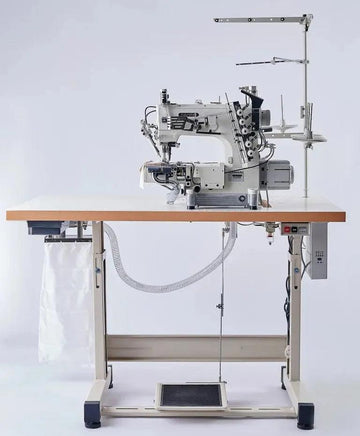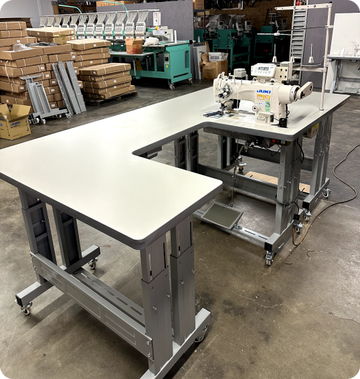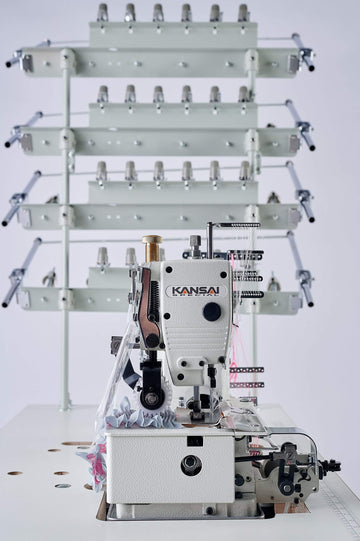If your stitches are skipping, your thread keeps snapping, or your fabric bunches up, your sewing machine likely needs a timing adjustment. Knowing how to fix timing on a sewing machine can save you downtime, protect your investment, and keep your projects running smoothly. This guide explains not only how to fix timing on domestic models but also dives deep into industrial sewing machines, commonly used across California, Los Angeles, and South El Monte commercial fabric shops.
What Is Sewing Machine Timing?
Sewing machine timing refers to the precise synchronization between the needle and the hook. If the hook fails to catch the needle thread loop at exactly the right moment, stitches skip or the needle hits metal parts. Understanding how to fix the timing on your sewing machine means aligning these two movements correctly.
In industrial environments — where machines run continuously on heavy materials like denim, leather, or canvas — fixing sewing machine timing is part of regular preventive maintenance. A small error in timing can lead to production delays and damaged fabrics, directly affecting quality and profit.
Why Industrial Sewing Machine Timing Is Critical
Industrial machines are built for speed, endurance, and precision. They often feature powerful drive shafts and servo motors that allow for thousands of stitches per minute. Because of this, even a minor misalignment can cause significant damage.
Knowing how to fix timing on industrial sewing machine setups is essential for factory owners and technicians in Los Angeles and South El Monte — where textile and garment production thrive. The timing affects every stitch and every seam, especially when dealing with thick or multi-layer fabrics.
If the needle and hook don’t synchronize properly:
-
The thread can snap at high speeds.
-
The needle may bend or break.
-
The bobbin thread might not catch.
-
Seams become weak or uneven.
To avoid these issues, every industrial machine requires periodic inspection and, if necessary, a sewing machine hook timing fix.
How to Fix Timing on Industrial Sewing Machine
The basic process of fix timing industrial sewing machine models follows similar principles as home machines — but with more durable components and tighter tolerances.
Step 1: Power Down and Prepare
Turn off and unplug the machine. Industrial models are powerful; safety is critical. Remove the needle plate, bobbin case, and feed dogs to access the hook assembly.
Step 2: Identify the Hook Position
Rotate the handwheel toward you until the needle reaches its lowest point. Then, observe as it rises about 1/16 inch. The hook tip should pass just behind the needle’s eye at this moment.
If the hook arrives too early or too late, your timing is off — and it’s time for a sewing machine timing fix.
Step 3: Adjust the Hook Drive Shaft
Loosen the screws on the hook drive gear under the machine bed. Carefully rotate the hook assembly until it aligns perfectly with the needle’s rising motion. Tighten the screws securely.
In some double needle industrial sewing machines, you’ll need to repeat this process for each needle — a procedure known as how to fix timing double needle industrial sewing machines.
Step 4: Reassemble and Test
Rotate the handwheel manually several times. Ensure smooth movement between the needle and hook. Once satisfied, reattach the plate, bobbin, and feed dogs. Run a fabric test at slow speed before resuming production.
Hook Timing and Drive Shaft Maintenance
Over time, vibration and fabric resistance can throw off the hook timing or even loosen components in the drive shaft. If you notice irregular movement or hear metal scraping, you may need to fix the timing on sewing machine drive shaft.
This repair ensures that the hook’s rotation and the needle’s movement remain in sync. Proper drive shaft timing also reduces wear and tear, extending your machine’s lifespan — especially in industrial and commercial sewing operations.
How to Fix Sewing Machine Hook Timing
If your issue lies specifically with the hook, follow these steps:
-
Remove the bobbin and expose the hook assembly.
-
Rotate the handwheel until the needle begins to rise.
-
Adjust the hook so its tip meets the needle just above the needle’s eye.
-
Tighten the hook screws gently, then test your machine.
This technique applies whether you’re learning how to fix the hook timing on an industrial sewing machine or how to fix sewing machine hook timing on a home model.
When Does Timing Have to Be Fixed on a Sewing Machine?
Timing should be checked whenever you:
-
Hear clunking or grinding noises.
-
Replace the hook or needle bar.
-
Notice skipped stitches or thread breakage.
-
Change fabric types drastically (e.g., from silk to canvas).
In California’s bustling sewing districts, especially in Los Angeles and South El Monte, professional technicians recommend checking timing every six months for industrial machines. Regular fixing timing on sewing machine maintenance helps ensure consistent quality and minimizes downtime.
Read Also: Industrial Sewing Machine Brands
Industrial Sewing Machine Care and Warranty Support
Professional repair centers in Los ngeles offer industrial sewing machine timing fix services with quality parts and warranty protection. These technicians specialize in how to fix the timing of the bobbin on my sewing machine, as well as advanced hook and drive shaft calibration.
Whether you run a small tailoring shop or a large commercial production line, regular sewing machine timing fix and inspection will protect your investment. Choosing authorized service providers ensures your machine retains its warranty and continues delivering professional-grade stitching.
Final Thoughts
Learning how to fix timing on a sewing machine empowers you to maintain efficiency and craftsmanship. For professionals, knowing how to fix timing on industrial sewing machine models is even more valuable — it keeps operations smooth, fabrics consistent, and clients satisfied.
Whether you’re in South El Monte, Los Angeles, or anywhere in California, trust expert technicians when necessary. A timely fix sewing machine timing adjustment ensures your machine’s performance stays top-tier and your production line runs flawlessly.









